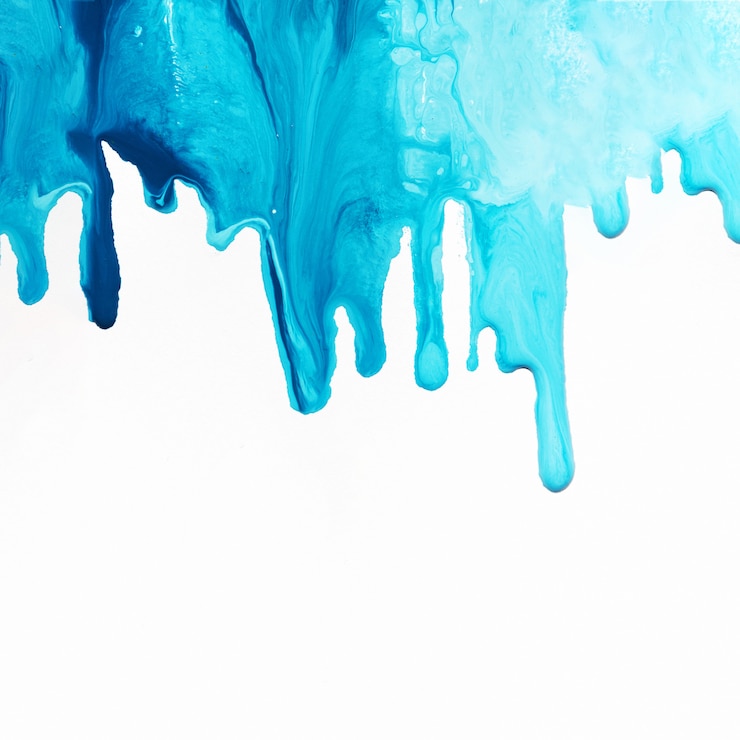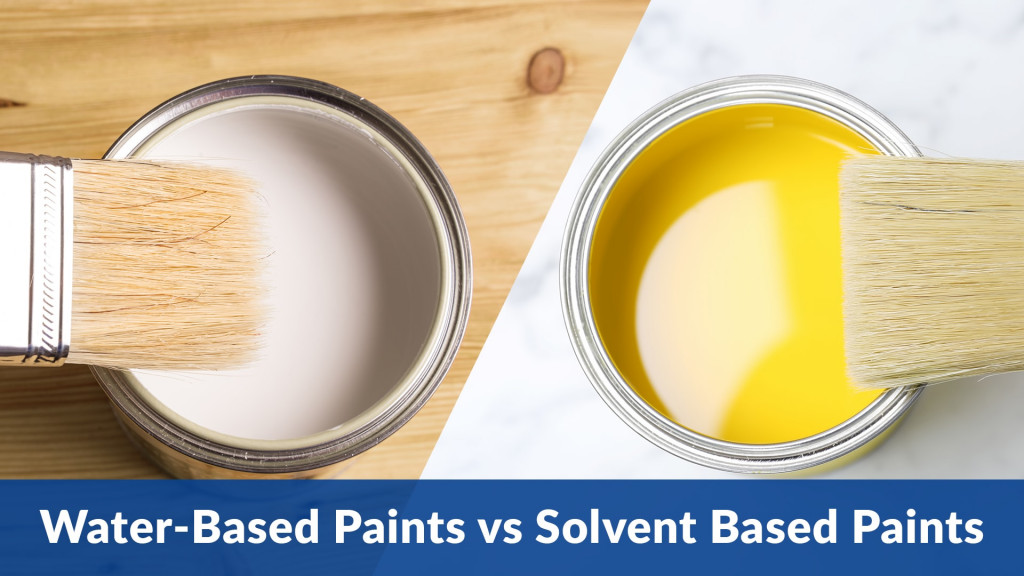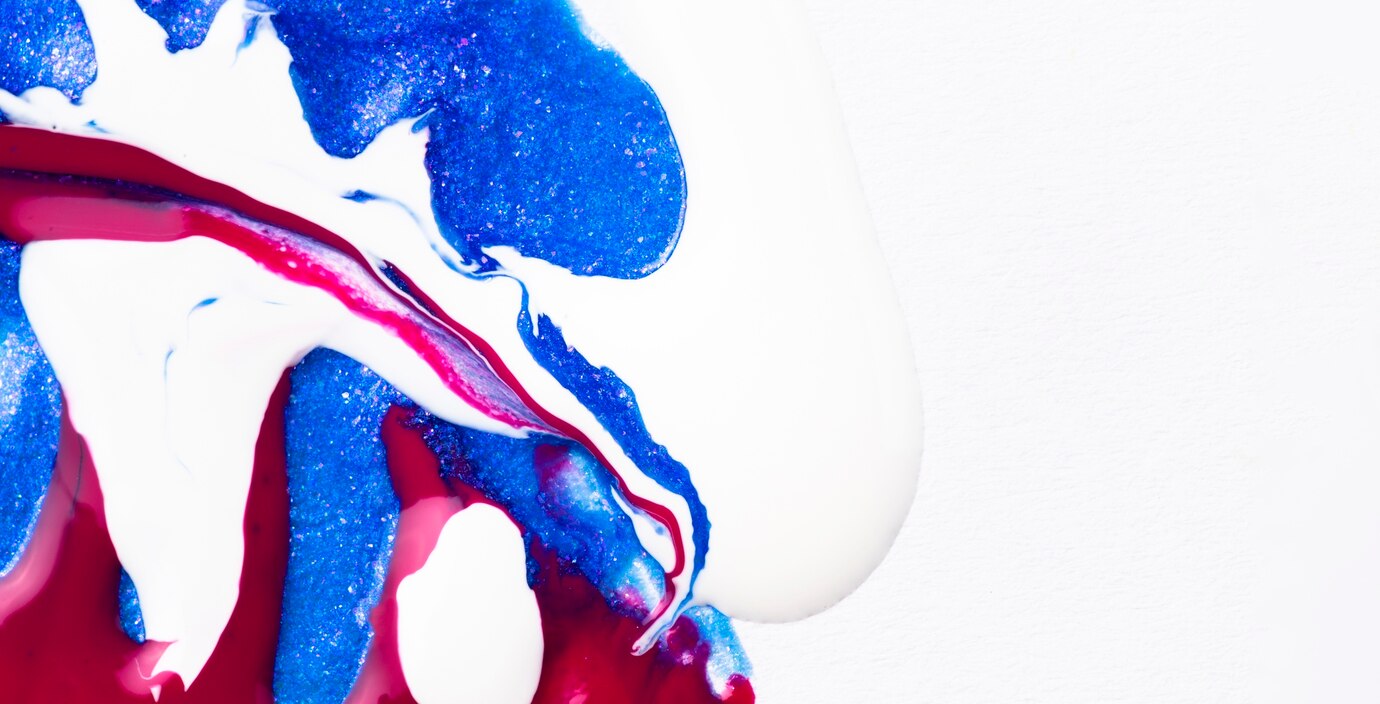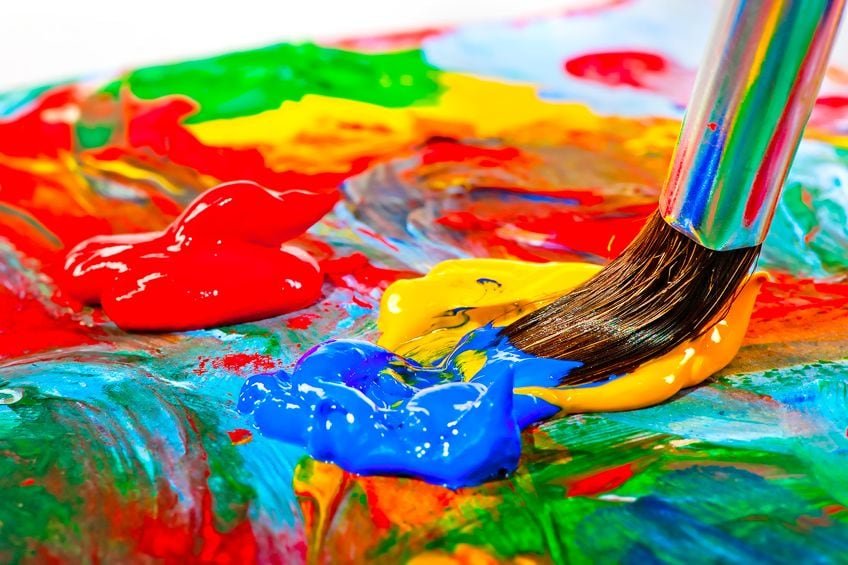So, you want to paint but you are not sure if acrylic paint is a great fit for your project. A lot of beginner painters often ask, ” is acrylic paint water-based? You’re not alone. Even though it’s called acrylic paint, most people like to know that it won’t fully dissolve the minute it comes into contact with a drop of water.
Acrylic paint is water-based . It is made of a pigment suspended in an acrylic polymer emulsion. Unlike oil-based paints, which use a solvent such as turpentine or mineral spirits to thin the paint and clean up, acrylic paint is thinned and cleaned up with water. It dries quickly and is very versatile, with a range of possible applications and techniques.
This article explains why acrylic paint is water-based and highlights the distinctions between water-based and oil-based paints. It also examines the pros and cons of each type of paint, allowing you to make informed decisions based on your specific requirements. Without, further a do, let’s get to it.
Related Reading
- Can You Add Water to Acrylic Paint?
- Are Acrylic and Latex Paint the Same?
- What are Acrylic Paints?
- How Long Do Acrylic Paints Last?
- Can You Use Acrylic Paint on Skin?
- Top Best Neon Acrylic Paints in 2023
Is Acrylic Paint Water-Based?


Acrylic paint is water based.
It is a fast-drying type of paint that is made from synthetic polymers. It’s usually used with water-based mediums, such as watercolor or gouache, to make the finished piece more transparent and vibrant.
Additionally, acrylics are an excellent choice for both beginners and professional artists because they’re versatile and easy to use. They can also be applied in almost any medium- from watercolor washes to thick impasto applications. And, if your acrylic paint is thicker, you can actually thin it out with water( Read full article ).
Is Acrylic Paint Oil Based?
Acrylic paint is not oil based. It is water based, and can be used on many different surfaces. However, there are now plenty of oil- paints that are not acrylic. I have a fan who emailed me last month telling me how he tried to mix oil with acrylic paint and it didn’t turn out great. Well, truth is oil does not have the same chemical composition as acrylic pant so the two are incompatible. As much as you can try it out, it will not look perfect. You can read more here
Furthermore, acrylic paints are water-based and usually composed of pigments, plasticizers, fillers and other additives. The plasticizers are what make acrylics flow like oil paints when they dry. When you apply paint to canvas or paper with an acrylic medium, it will appear wetter than an oil-based medium would at the same stage of drying.
This also means that an acrylic painting can be easily manipulated by adding layers over previous ones without worrying about brush strokes showing through later on in the process. In some cases, you can even experiment with resin as these two are compatibe.
Difference Between Water-Based and Oil Based Paints?


1) Solvent
The primary difference between water-based and oil-based paints is the solvent used in each. Acrylic paints, use water as their solvent, while oil-based paints, also known as alkyd paints, use mineral spirits, turpentine, or other petroleum-based solvents as their solvent.
Note: The solvent in a paint is what allows the paint to be thinned out and applied to a surface.
Acrylic paints use water as the primary solvent, which makes them easy to clean up with soap and water. Additionally, they are also low in VOCs, which are harmful chemicals that can be emitted by some paints and are known to cause health issues. The use of water as a solvent means that water-based paints dry quickly, which can be beneficial in situations where a faster drying time is desired.
Oil-based paints, on the other hand, use mineral spirits, turpentine, or other petroleum-based solvents as their solvent. These solvents are much stronger than water, and they require special handling and disposal.
2) Drying Time
Water-based paint can also be applied by brush or roller, but is more likely to run when applied in thin coats. When it comes to drying time, water-based paint dries relatively quickly (within 24 hours), and can be cleaned up with soap and water after it has dried. It also works well on walls and ceilings because of its quick drying time.
While oil – based paint is made from linseed oil (from flax seeds), pine resin or turpentine (derived from pine trees). It can be applied with either brushes or rollers, but it takes longer to dry than water-based paint (48 hours).
Because it takes longer to dry, oil- based paint has a tendency to sag if used on ceilings or walls instead of on wood or canvas. Oil paint also has a tendency to yellow over time, so it’s not ideal for use on furniture or other items that will be exposed to sunlight.
Recommended Article: How Long Do Acrylic Paints Last?
3) Finish
Acrylic paints produce a flatter, matte or satin finish, while oil-based paints have a glossier, shinier finish. The difference here is in finish as water-based and oil-based paints can be attributed to several factors. One of the primary factors is the way the solvents in each type of paint evaporate.
Water-based ( acrylic paints) dry as the water evaporates, leaving behind a smooth, flat finish while oil-based paints, on the other hand, dry as the solvents evaporate, leaving behind a hard, glossy surface.
Another factor that can influence the finish of a paint is the type and amount of pigment used. Some pigments can create a more matte finish, while others can create a glossier finish. Oil-based paints typically contain more pigment, which can contribute to the shiny finish they produce.
It’s worth noting that there are variations in finish within both water-based and oil-based paints. Some water-based paints, for example, may have a more glossy finish, while some oil-based paints may have a more matte finish. Additionally, some paints may have additives or coatings that can alter their finish.
When selecting a paint, it’s important to consider the desired finish and choose a paint that will achieve that effect. Matte or satin finishes are often used in interior spaces, as they can help to minimize surface imperfections and create a more subtle, understated look. Glossy finishes, on the other hand, are often used in high-traffic or high-moisture areas, as they tend to be more durable and easier to clean.
Recommended Product
- Mod Podge For Metal
- Top 3 Best Mod Podge Formulas for Metal in 2023 : A Complete Review
- Mod Podge Hard Coat Review
4. Application
Well, acrylic paint is really easier to apply than oil-based paint due to it having a thinner consistency than oil-based paint. This makes it easier to apply and spread evenly, especially for artists who are just starting out and still developing their skills.
5 ) Clean Up
The process of cleaning up acrylic paint and oil-based paint for painters can be quite different, mainly due to the solvents used in each type of paint.
Acrylic paint is water-based and can be easily cleaned up with soap and water. Also, any brushes and other tools used with acrylic paint can be washed with water, and any spills or splatters can be wiped up with just a damp cloth.
On the other hand, oil-based paint requires the use of solvents or thinners for clean-up. Mineral spirits, turpentine, or petroleum-based solvents are typically used to clean brushes and tools used with oil paint, as well as to clean up any spills or splatters. These solvents can be toxic and emit harmful fumes, so it is important to use them in a well-ventilated area and follow proper safety precautions.
Overall, the clean-up process for acrylic paint is generally considered to be a lot easier and less toxic than for oil-based paint. This makes acrylic paint a more convenient option for artists who want to work quickly and efficiently without having to worry about the hassle of cleaning up with harsh solvents.
Recommended Article: How Long Do Acrylic Paints Last?
6) Odor
Acrylic paint has a much lower odor than oil-based paint, which can be strong and unpleasant. This is because acrylic paint is water-based and does not contain the same solvents as oil-based paint, which emit strong fumes during application and drying.
7) Yellowing
Oil based paints tend to yellow over time, The yellowing and fading of oil-based paint is mainly due to a chemical reaction that occurs between the oil-based binder and the oxygen . This reaction causes the paint to yellow and become less vibrant, especially in areas that are exposed to direct sunlight or high levels of heat.
In contrast, acrylic paint contains a synthetic polymer as its binder, which does not react with oxygen or light in the same way as the oil-based binder. As a result, many painters and crafters prefer acrylic paint for its excellent colourfastness and high resistance to yellowing.
8) Coverage
The coverage of a paint refers to the ability of the paint to provide an opaque and solid color over a surface with fewer coats. Acrylic paint typically has better coverage than oil-based paint because of its unique properties and consistency.
It contains a synthetic polymer as its binder allows the paint to spread more evenly and easily over the surface, which results in a more solid and opaque color. Additionally, acrylic paint is highly pigmented, which means that it has a greater color intensity compared to oil-based paint. This allows for a more vibrant and bold color with fewer coats.
On the other hand, oil-based paint is thicker and has a higher viscosity compared to acrylic paint. This can make it more difficult to spread evenly over a surface, and it may require more coats to achieve the same level of coverage as acrylic paint.
Note: The better coverage of acrylic paint is especially beneficial when working with large areas, as it can help to save time and effort.
9) Flexibility
Flexibility is an important characteristic of paint, particularly when it comes to surfaces that are subject to movement or expansion, such as walls or furniture. Acrylic paint is generally more flexible than oil-based paint and less likely to crack or peel over time which means that it dries to a more flexible and durable finish than oil-based paint. Here’s how– When acrylic paint dries, it forms a polymer that is both strong and flexible. This allows the paint to move and expand with the surface, which reduces the likelihood of cracking or peeling While oil-based paint can become brittle over time and may crack or peel under stress simple because oil-based paint dries to a harder and more inflexible finish than acrylic paint.
Oil-based paint is also more susceptible to temperature changes and moisture, which can cause the paint to expand or contract and eventually crack or peel.
10)Toxicity
Oil-based paints contain solvents. These solvents can emit harmful fumes and pose a risk to both the environment and human health. The VOCs can cause a range of health problems, including headaches, dizziness, and nausea. In contrast, water-based acrylic paint contains lower levels of VOCs and emits fewer harmful fumes. To know about the toxicity of acrylic paint, kindly check out this article.
Side Note: In general, acrylic paint is considered a safer and more environmentally friendly option than oil-based paint. However, it is still important to use proper ventilation and take appropriate safety precautions when working with any type of paint, including acrylic.
| Difference | Water-Based Paints | Oil-Based Paints |
|---|---|---|
| Solvent | Water | Mineral spirits, turpentine, or other petroleum-based solvents |
| Drying Time | Dries much faster (in minutes) | Can take several hours to several days to dry completely |
| Finish | Typically matte or satin | Typically glossy |
| Application | Thinner and easier to apply | Thicker and requires more skill to apply evenly |
| Clean-up | Easy to clean up with soap and water | Requires solvents or thinners for clean-up |
| Odor | Lower odor | Strong and unpleasant odor( due to solvents such as turpentine) |
| Yellowing | Does not yellow over time | Can yellow over time |
| Coverage | Typically has better coverage, requiring fewer coats | May require more coats to achieve a solid color |
| Flexibility | More flexible and less likely to crack or peel | Less flexible and more likely to crack or peel |
| Toxicity | Generally less toxic | Can release harmful fumes and requires more careful handling and disposal |
Is Acrylic Paint Latex?


Acrylic paint is not latex . Latex paints are made from synthetic latex binders that are derived from natural rubber materials, such as latex rubber or styrene butadiene rubber (SBR). Acrylic paints are made with different types of liquids and water-soluble polymers called acrylic resins (also known as polyacrylates). These resins can be polymerized with other monomers (such as methyl methacrylate) or they can be copolymerized with one or more other monomers (such as ethyl acrylate).
Although they are sometimes confused. Acrylic paint, on the other hand, uses an acrylic polymer as the binder. While both types of paint are water-based and can be thinned and cleaned up with water, they are chemically different and should not be mixed or used interchangeably. So, while acrylic paint is water-based like latex paint, it is not considered latex paint. For a full detailed explanation, kindly check out this article( I go in depth on what makes acrylic paint and latex paint different ).
Mixing Oil and Acrylic Paint? Is it Recommended?
Mixing oil and acrylic paint is not recommended. The two types of paints are made with different solvents and binders, and they have different drying times and properties. Oil paint uses a drying oil as a binder, while acrylic paint uses an acrylic polymer emulsion as a binder. If you mix them, the oil and acrylic paint layers will not bond properly, and the paint film may crack or peel over time.
In addition, oil and water do not mix, so if you mix oil paint with acrylic paint, you may have issues with adhesion and the paint may separate. The oil in the oil paint may also cause the acrylic paint to become more transparent, which can affect the color and opacity of the paint.
If you want to combine oil and acrylic paint in a painting, it is best to use them in separate layers. You can start with an acrylic base layer and then add oil paint on top once the acrylic layer is completely dry. See full guide here. However, keep in mind that the drying time for oil paint is much longer than for acrylic paint, so you will need to wait a longer time before adding the oil layer on top.
Is Acrylic Enamel Paint Water Based?
Enamel paint is not water based. It is an oil-based paint finish that has a hard, glossy surface. It’s often used on metal or wood surfaces, but it can also be used on furniture or walls. I have seen some painters paint acrylic over enamel? Is it recommended? The answer is it depends on how you use it. A primer is needed so that they bond together. If you would like to paint acrylic over enamel, follow this guide.
In-depth, enamel paints are extremely durable and resist fading, chipping and peeling. They are also easy to apply. The good thing about enamel paints is that they are manufactured with different types of pigments, depending on the desired color.
Enamel paints are typically sold in cans and have a slightly glossy finish when dry. Acrylic enamels tend to be more expensive than oil-based enamels, but they’re easier to work with because they dry faster and are less toxic than oil-based paints.
Lastly , enamel paints come in various sheens, including flat, eggshell and semi-gloss finishes depending on the desired appearance of your project. The sheen of your enamel depends largely on how much gloss is applied during manufacturing.
What Is The Difference Between Enamel Paint And Acrylic Paint?
| Feature | Enamel Paint | Acrylic Paint |
|---|---|---|
| Solvent | Enamel paint is oil-based and uses a solvent thinner | Acrylic paint is water-based and uses water as a solvent |
| Drying time | Typically takes longer to dry | Dries faster |
| Finish | Has a glossy finish | Has a matte, satin, or glossy finish |
| Application | Thick and requires a lot of skill | Thinner and easier to apply |
| Clean-up | Requires solvents or thinners for clean-up | Easy to clean up with soap and water |
| Odor | Enamel paint has a strong and unpleasant odor | Lower odor |
| Yellowing | Can yellow over time | colourfast |
| Coverage | Better coverage | Can require more coats to achieve solid color |
| Flexibility | More brittle and prone to cracking | More flexible and less prone to cracking |
| Toxicity | Enamel paint can release harmful fumes | Acrylic paint is generally less toxic |
Enamel paint and acrylic paint are two of the most popular types of paint. But, they are different. The clear difference is that Enamel acrylic paint is oil based while Acrylic paint is called water-based paint. However, these two have other differences such as;
1. Drying Times: The drying times for both types of paint vary greatly depending on the type of surface being painted and the thickness of layers being applied. Enamels dry much faster than acrylics because they tend to be thicker than acrylics, which helps them adhere better to surfaces such as wood and metal. Acrylics dry more slowly because they can be thinned with water or other liquids like alcohols which take longer to evaporate from the surface being painted.
2. Sheen: Enamel paints have a glossy finish while acrylics typically have a flat finish that resembles plexiglass or window glass rather than a mirror-like shine like enamel paints.
Enamel paints are a popular choice for interior and exterior painting. The paints are formulated to provide excellent coverage, even on large areas, with a smooth finish. They can be used to cover wood, plaster or metal other porous surfaces; they are also suitable for use in bathrooms and kitchens.
Related Post: Can You Use Acrylic Paint on Wood?
Is Water Based Acrylic Paint Waterproof?
Acrylic paint is highly water-resistant but it is never waterproof. It will resist water, but if you leave the painting outside in the rain or wash it over with a hose, the paint will eventually soften and fade away. Acrylic paints can also be washed off with soap and water or with a solvent such as turpentine.
However, acrylics are much more resistant to humidity than oils, so if you live in an area with high humidity (such as Florida), you may want to consider using acrylics for outdoor paintings.
In addition, there are all sorts of sealers available that can help protect your work from moisture damage. These include varnishes, gloss mediums and UV-resistant mediums. My favorite is the Mod Podge Sealers
Is Water Based Acrylic Paint Washable?
Water based acrylic paint is washable. Water based acrylic paints are made up of water and polymer binders that allow the paint to dry quickly. You can wash it off with soap and water or use a mild detergent to get rid of any staining. Here’s how to wash off acrylic paint is simple easy steps?
Many painters love water based acrylics due to the fact that water based acrylics are non-toxic, odorless and non-flammable. They’re also easy to clean up after applying them to your fabric. The best part is that water based acrylic paints are easy to use because they don’t need any special tools or equipment. Just brush on the paint and you’re done!
Which Is Better Acrylic or Latex Paint?
It’s a common question. The answer is that it depends on your needs. Latex and acrylic are both fast-drying, water-based paints with similar qualities. However, they have different applications and uses. Acrylic paint is often used in high-moisture areas like bathrooms or kitchens because it’s more durable than latex paint. It can also be used outdoors without cracking or fading as latex might do under hot sun or freezing temperatures.
Acrylic paint also has a higher sheen than latex, which gives it a glossy look when dry. Latex paint is usually best for areas where moisture may be an issue because it is more flexible than acrylic and can withstand more moisture over time without peeling off the wall. It also works well on walls that get lots of sunlight throughout the day because it won’t fade as quickly as acrylic does in those conditions.


What Happens if Acrylic Paint Gets Wet?
The first thing that happens when acrylic paint gets wet is that it dissolves in water. This means that any existing pigment breaks down, leaving you with a thin layer of color on top of the paper or canvas. If the paint was allowed to dry completely before getting wet again, this would not be so bad.
The second factor that affects how long it takes for water to dissolve acrylic paint is what kind of surface you’re painting on top of. If you’re painting on paper or cardboard, then water will penetrate faster than if you’re painting on wood or metal because those materials are harder than paper or cardboard.
There are some cases where you may want to thin out acrylic paint with water. It is possible if you follow a 2:1 (paint: water.. This will makes sure that your pigments are do not all break down. It will also maintain consistency .
How to Seal Acrylic Paint?
Sealing acrylic paint is an important step to protect your artwork and preserve its vibrant colors over time. Here are some creative ways to seal acrylic paint:
Varnish: One of the most popular ways to seal acrylic paint is by using a varnish. A varnish is a clear, protective coating that can be brushed or sprayed onto your painting. It can provide a glossy, matte, or satin finish, depending on your preference. Varnish also helps to protect the painting from dust, dirt, and UV damage. I recommend (Liquitex BASICS Gloss Varnish)
UV-Protective Spray: Another way to seal acrylic paint is by using a UV-protective spray. This type of spray helps to protect your painting from fading and discoloration caused by exposure to UV rays. It can be applied directly to your painting and dries quickly.
Resin: For a more durable and glossy finish, you can use a resin to seal your acrylic painting. Resin is a two-part mixture that creates a hard, clear coating when it is mixed and applied to the surface of the painting. It can provide a glass-like finish that is resistant to scratches and heat. When using resin, it’s important to follow the manufacturer’s instructions and use proper safety precautions.
Glazing: You can also use a glazing medium to seal your acrylic painting. Glazing is a clear, fluid medium that can be applied in thin layers over the painting. It can enhance the colors and provide a luminous effect, while also protecting the painting from dust and dirt.
Paint-on Sealant: Another option is to use a paint-on sealant that can be applied directly to the surface of the painting. This type of sealant can provide a clear, protective layer that helps to prevent smudging and fading.
Recommended Sealer: Mod Podge Hard Coat Sealers, Mod Podge for Metal
In general, it’s important to use a sealant that is compatible with acrylic paint and to follow the manufacturer’s instructions carefully. With the right sealant, you can protect your acrylic painting and ensure that it stays vibrant and beautiful for years to come.
Instructions:
Here are some general instructions on how to seal acrylic paint:
- Allow the paint to dry completely: Before sealing your acrylic paint, make sure it is completely dry. Depending on the thickness of the paint and the surface you painted on, it may take several hours to dry completely.
- Choose a sealer: There are various types of sealers available for acrylic paint, including varnishes, sprays, and brushes. Choose a sealer that is compatible with acrylic paint and suits your needs.
- Test the sealer: Before applying the sealer to your entire artwork, test it on a small area to ensure that it does not cause any adverse reactions or damage to the paint.
- Apply the sealer: Use a clean brush, spray, or roller to apply the sealer evenly over the surface of the paint. Be careful not to apply the sealer too thickly, as this may cause the paint to crack or peel.
- Allow the sealer to dry: Generally, it takes a few several hours for the sealer to dry completely.
- Apply additional coats (optional): Depending on the type of sealer you use, you may need to apply additional coats to achieve the desired level of protection and gloss.
- Store the sealed artwork: Once the sealer has dried completely, store your artwork in a cool, dry place away from direct sunlight or moisture.
Important Factor: It is important to note that the specific instructions for sealing acrylic paint may vary depending on the type of sealer you use and the surface you painted on. Always read and follow the manufacturer’s instructions carefully to ensure the best results.
Frequently Asked Questions
Is Water-Based Paint Same as Acrylic?
They are not the same. Acrylic paint is water-soluble, while water-based paints are water-dispersible. The difference between these two types of paints is that with acrylic paints, you can wash them off with a damp cloth or sponge.
Is Acrylic Paint Washable?
It is washable but the color will fade if there are stains on it. It is recommended that you wash your hands after painting so that no stains get into your nails which could be hard to remove later on.
Conclusion
Acrylic paint is water-based. But, that doesn’t mean it doesn’t have its own set of quirks and caveats. The fact is that knowing what you’re doing when working with acrylic paint is important. Proceed too hastily or without the proper knowledge and you could end up with a mess on your hands—literally! Thanks for reading!
REFERENCES
- Acrylic Paint: https://en.wikipedia.org/wiki/Acrylic_paint#:~:text=Acrylic%20paint%20is%20a%20fast,become%20water%2Dresistant%20when%20dry.
- Is acrylic paint water-based?: https://www.quora.com/Is-acrylic-paint-water-based
- Britannica: turpentine






